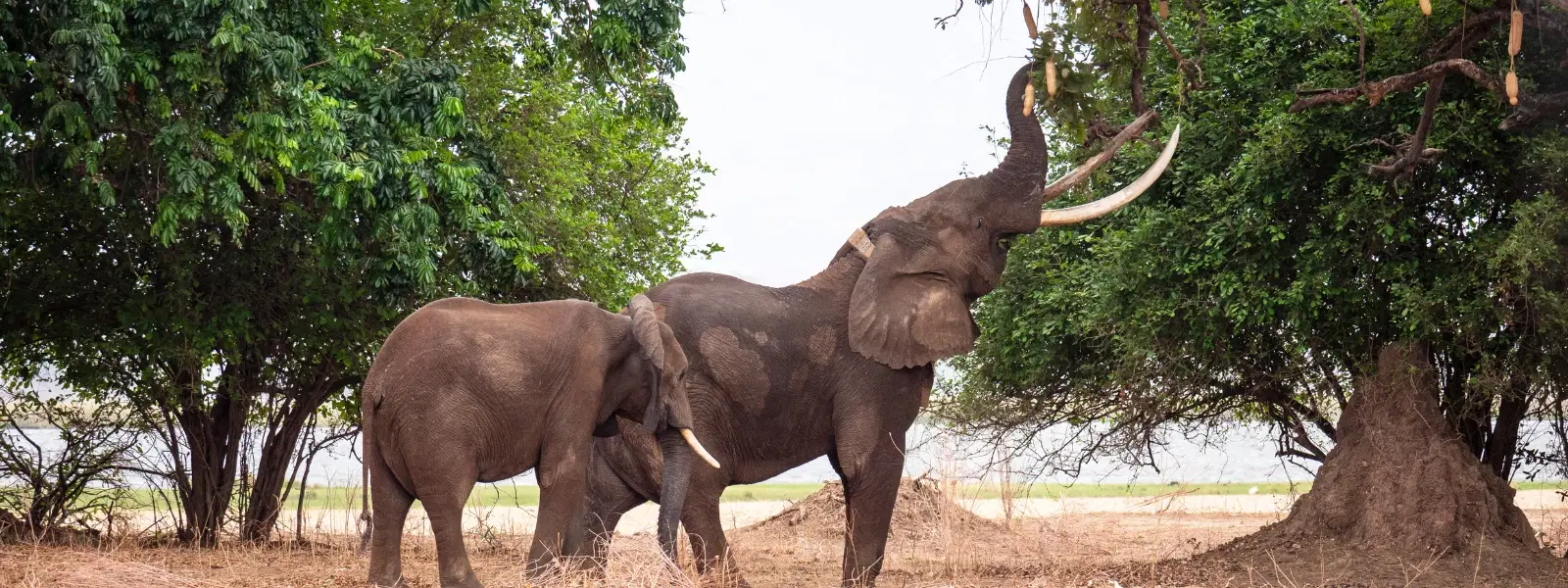
Hotels
•04 min read

India is home to 7-8% of the world's recorded species, yet habitat fragmentation threatens this rich biodiversity every day. Wildlife corridors act as lifelines connecting fragmented habitats, enabling animal migration and ensuring that ecosystems remain vibrant and resilient. In this blog, you will learn how to explore these wildlife corridors sustainably, understand their ecological importance, and contribute to wildlife conservation in India through conservation travel.
Wildlife corridors in India are natural or man-made pathways that connect isolated patches of habitat. These corridors help maintain habitat connectivity by allowing animals to travel safely between regions. By promoting genetic diversity and reducing human-wildlife conflicts, these routes play a crucial role in wildlife conservation in India.
Some of the most notable corridors include tiger corridors and elephant corridors. For instance, the Kanha-Pench corridor offers a vital passage for tigers, while the corridors within the Nilgiri Biosphere Reserve enable the safe movement of elephants between protected areas. These animal corridors in India help interlink national parks and wildlife sanctuaries, forming a network that benefits both wildlife and local communities.
Wildlife corridors are essential for sustaining biodiversity by providing safe migration routes for numerous species. Their existence is critical in combating habitat fragmentation and mitigating the adverse effects of climate change. By maintaining ecological balance and ensuring sustainable travel practices, these corridors empower conservation initiatives across the country.
Sustainable travel involves minimizing environmental impact while supporting local communities. When exploring wildlife corridors, it is important to follow eco-tourism practices such as reducing waste, respecting local cultures, and actively supporting conservation initiatives. This approach enhances your travel experience and contributes to the preservation of biodiversity hotspots in India.
For a responsible adventure in Indian wildlife sanctuaries, stick to designated trails, avoid disturbing the natural habitat, and adhere to park regulations. Choosing eco-friendly accommodations and tour operators reinforces the commitment to sustainable travel in India. Additionally, remember that even small actions like reducing waste can have a positive impact on nature conservation travel efforts.
Communities living near wildlife corridors often benefit directly from sustainable tourism. By engaging with local initiatives such as community-based tourism and conservation projects, travelers can contribute to the economic development of these regions. This mutually beneficial relationship strengthens the bonds between nature conservation in India and the people who call these areas home.

India boasts several wildlife sanctuaries and national parks that form part of critical corridors. Renowned examples include Kaziranga National Park, Corbett Tiger Reserve, and Periyar Wildlife Sanctuary. Exploring these sanctuaries not only offers breathtaking encounters with nature, but also supports the broader conservation efforts in Indian wildlife sanctuaries.
The Western Ghats and the Himalayas are among India’s most important biodiversity hotspots. These regions house unique flora and fauna and benefit immensely from wildlife migration routes that ensure genetic interchange. The connectivity provided by animal corridors in India is essential to preserve the ecological character of these areas.
India has a robust framework for wildlife conservation that includes government initiatives such as Project Tiger and Project Elephant. In addition, NGOs and community-driven projects play active roles in protecting native species and their habitats. These combined efforts help secure habitat connectivity in India and champion sustainable travel practices.
Despite significant progress, wildlife corridors face challenges including habitat fragmentation, human encroachment, and inadequate funding. Policy gaps and enforcement issues further complicate the protection of these critical pathways. Addressing these challenges is key to ensuring that wildlife corridors continue to thrive.
Modern technologies such as GPS tracking, drones, and artificial intelligence are revolutionizing the management of wildlife corridors. These tools help monitor animal movements, assess corridor health, and ensure that conservation efforts are effective. Embracing tech advances paves the way for a future where wildlife corridors in India are better protected and maintained.
Wildlife corridors in India not only support animal migration but also help reduce human-wildlife conflict by providing safe passage for animals away from populated areas.

When selecting wildlife corridors and national parks to visit, consider your conservation travel goals. Research the ecological impact of your chosen destination and ensure that your visit contributes positively to nature conservation travel. This mindful planning enhances both your experience and the local environment.
Finding ethical tour operators who specialize in eco-tourism in India is crucial. Look for providers that adhere to international certifications such as Travelife and Green Globe. Engaging with experienced professionals ensures a respectful, enriching encounter with the natural world while adhering to sustainable travel in India.
Prepare for your adventure by packing eco-friendly essentials. Items like reusable water bottles, biodegradable toiletries, and wildlife-safe clothing support sustainable travel practices. Small changes in your travel gear can make a significant difference in reducing your environmental footprint.
There are approximately 101 identified wildlife corridors in India, connecting critical habitats for species like tigers and elephants.
Wildlife corridors facilitate animal movement, reduce habitat fragmentation, and promote genetic diversity, which is essential for species survival.
India has launched programs like Project Tiger, Project Elephant, and the Green India Mission to protect forests and wildlife.
Wildlife crossings include underpasses, overpasses, and bridges designed to help animals safely cross highways and railways without human interference.
India’s wildlife corridors are vital for preserving the country's rich biodiversity and enabling the safe migration of countless species. By exploring these corridors sustainably, travelers play an active role in wildlife conservation in India while enjoying breathtaking natural landscapes. Embracing eco-tourism and responsible travel practices makes it possible to safeguard these ecological wonders for future generations.